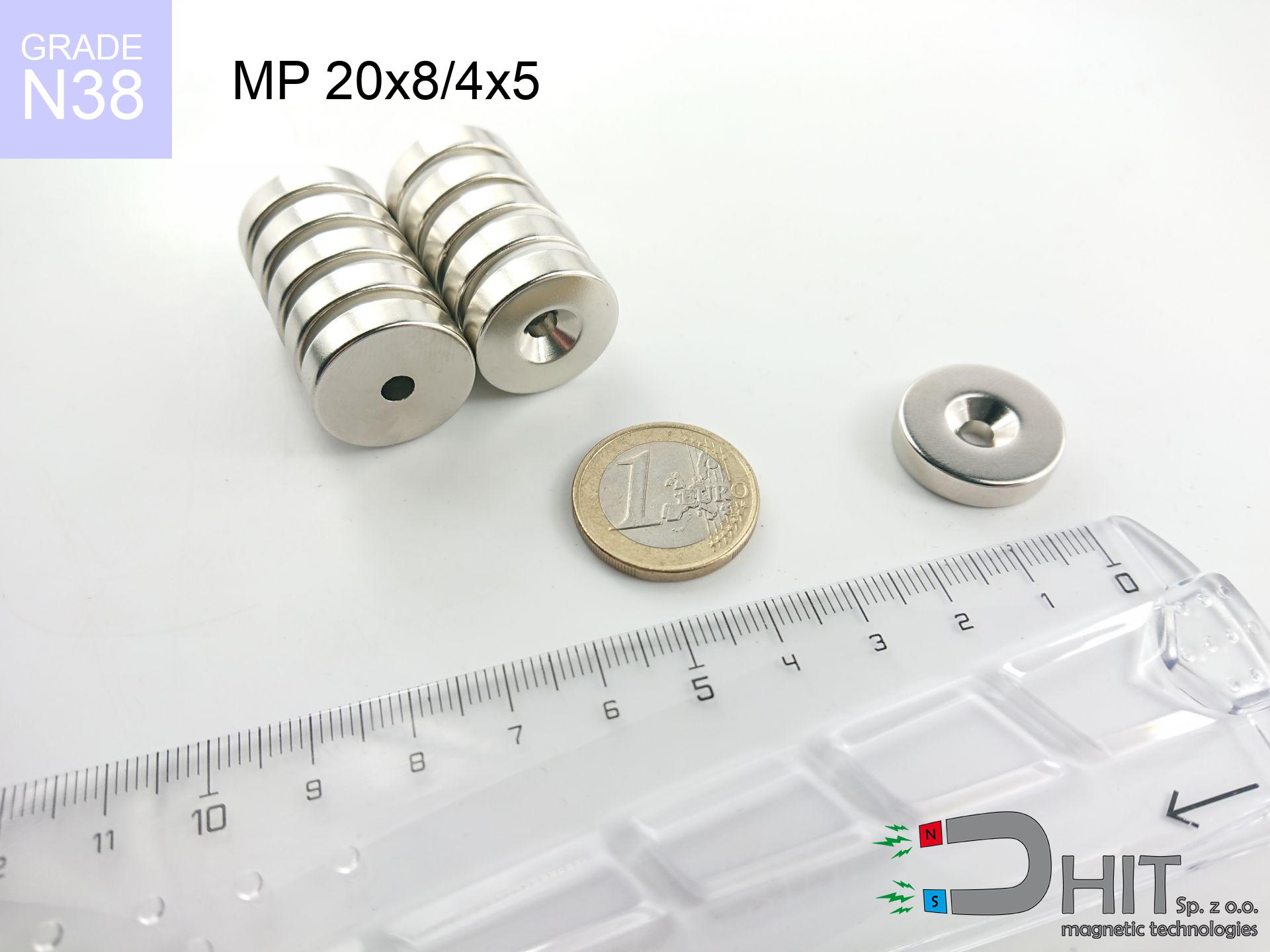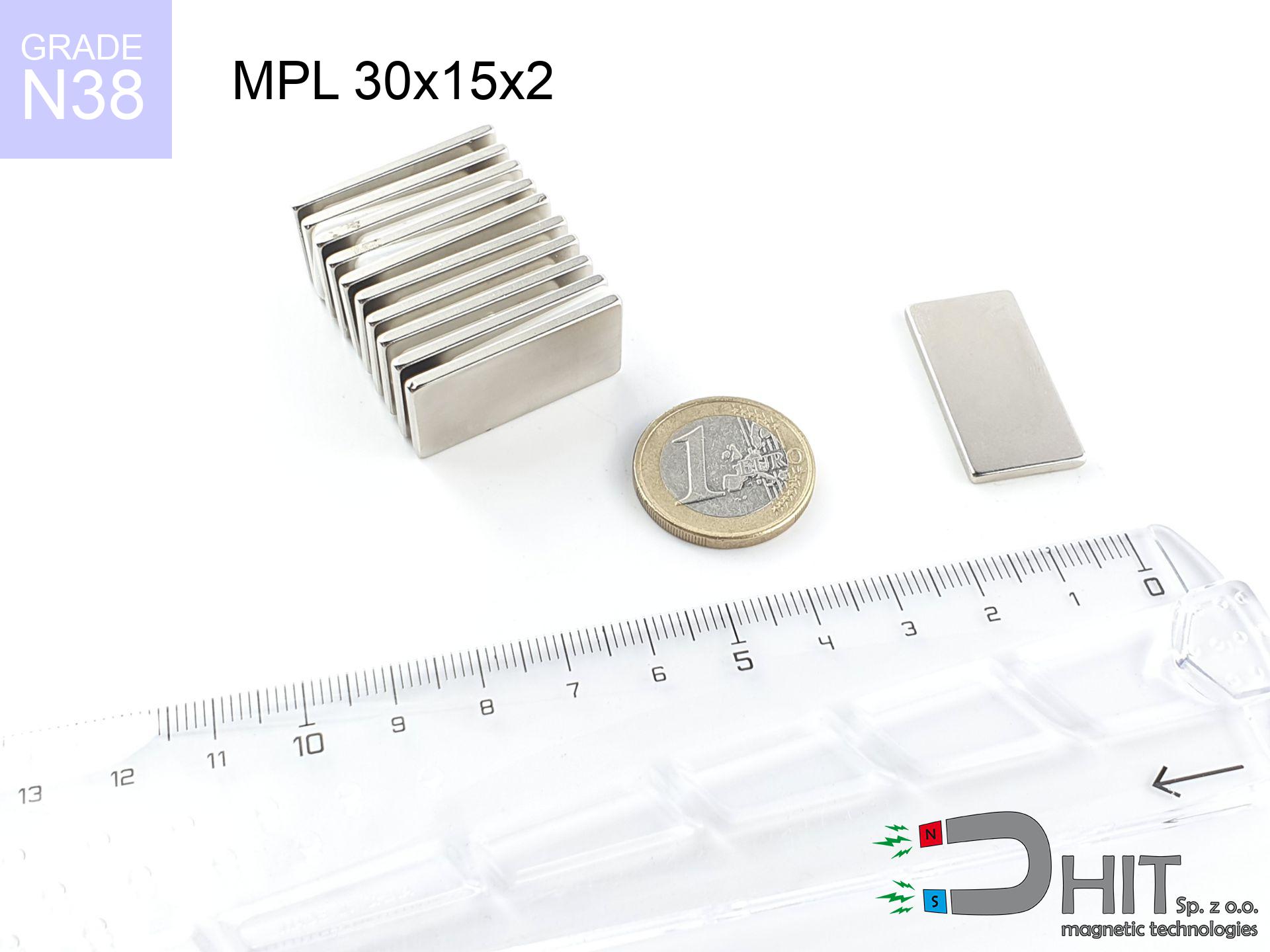AM ucho małe [M8] - magnetic accessories
magnetic accessories
Catalog no 080345
GTIN/EAN: 5906301812487
Weight
27 g
Load capacity
240.00 kg / 2353.60 N
4.92 ZŁ with VAT / pcs + price for transport
4.00 ZŁ net + 23% VAT / pcs
bulk discounts:
Need more?
Call us
+48 22 499 98 98
alternatively send us a note by means of
form
through our site.
Weight as well as appearance of magnets can be analyzed using our
power calculator.
Orders submitted before 14:00 will be dispatched today!
Technical details - AM ucho małe [M8] - magnetic accessories
Specification / characteristics - AM ucho małe [M8] - magnetic accessories
| properties | values |
|---|---|
| Cat. no. | 080345 |
| GTIN/EAN | 5906301812487 |
| Production/Distribution | Dhit sp. z o.o. |
| Country of origin | Poland / China / Germany |
| Customs code | 85059029 |
| Weight | 27 g |
| Load capacity ~ ? | 240.00 kg / 2353.60 N |
| Manufacturing Tolerance | ±1 mm |
Physical properties of sintered neodymium magnets Nd2Fe14B at 20°C
| properties | values | units |
|---|---|---|
| Vickers hardness | ≥550 | Hv |
| Density | ≥7.4 | g/cm3 |
| Curie Temperature TC | 312 - 380 | °C |
| Curie Temperature TF | 593 - 716 | °F |
| Specific resistance | 150 | μΩ⋅cm |
| Bending strength | 250 | MPa |
| Compressive strength | 1000~1100 | MPa |
| Thermal expansion parallel (∥) to orientation (M) | (3-4) x 10-6 | °C-1 |
| Thermal expansion perpendicular (⊥) to orientation (M) | -(1-3) x 10-6 | °C-1 |
| Young's modulus | 1.7 x 104 | kg/mm² |
Elemental analysis
| iron (Fe) | 64% – 68% |
| neodymium (Nd) | 29% – 32% |
| boron (B) | 1.1% – 1.2% |
| dysprosium (Dy) | 0.5% – 2.0% |
| coating (Ni-Cu-Ni) | < 0.05% |
Environmental data
| recyclability (EoL) | 100% |
| recycled raw materials | ~10% (pre-cons) |
| carbon footprint | low / zredukowany |
| waste code (EWC) | 16 02 16 |
Other deals
Strengths as well as weaknesses of rare earth magnets.
Advantages
- They retain full power for around 10 years – the loss is just ~1% (according to analyses),
- They possess excellent resistance to weakening of magnetic properties when exposed to external magnetic sources,
- The use of an metallic finish of noble metals (nickel, gold, silver) causes the element to look better,
- Neodymium magnets ensure maximum magnetic induction on a contact point, which ensures high operational effectiveness,
- Through (appropriate) combination of ingredients, they can achieve high thermal strength, allowing for action at temperatures reaching 230°C and above...
- Considering the possibility of flexible shaping and customization to individualized needs, NdFeB magnets can be manufactured in a variety of geometric configurations, which makes them more universal,
- Significant place in future technologies – they are utilized in magnetic memories, electric drive systems, medical equipment, and multitasking production systems.
- Thanks to concentrated force, small magnets offer high operating force, occupying minimum space,
Limitations
- Brittleness is one of their disadvantages. Upon strong impact they can fracture. We recommend keeping them in a special holder, which not only protects them against impacts but also increases their durability
- When exposed to high temperature, neodymium magnets experience a drop in power. Often, when the temperature exceeds 80°C, their strength decreases (depending on the size, as well as shape of the magnet). For those who need magnets for extreme conditions, we offer [AH] versions withstanding up to 230°C
- Magnets exposed to a humid environment can corrode. Therefore when using outdoors, we advise using water-impermeable magnets made of rubber, plastic or other material resistant to moisture
- We recommend casing - magnetic holder, due to difficulties in producing threads inside the magnet and complicated forms.
- Possible danger resulting from small fragments of magnets pose a threat, if swallowed, which becomes key in the context of child safety. Furthermore, small components of these devices can complicate diagnosis medical when they are in the body.
- High unit price – neodymium magnets have a higher price than other types of magnets (e.g. ferrite), which can limit application in large quantities
Holding force characteristics
Maximum holding power of the magnet – what affects it?
- using a sheet made of high-permeability steel, acting as a magnetic yoke
- with a cross-section no less than 10 mm
- with a plane free of scratches
- with zero gap (no paint)
- under perpendicular force vector (90-degree angle)
- in temp. approx. 20°C
What influences lifting capacity in practice
- Distance – existence of foreign body (rust, dirt, gap) acts as an insulator, which lowers power steeply (even by 50% at 0.5 mm).
- Loading method – declared lifting capacity refers to detachment vertically. When slipping, the magnet exhibits much less (typically approx. 20-30% of nominal force).
- Steel thickness – insufficiently thick sheet does not close the flux, causing part of the power to be lost into the air.
- Metal type – not every steel attracts identically. Alloy additives worsen the interaction with the magnet.
- Plate texture – smooth surfaces ensure maximum contact, which increases field saturation. Uneven metal reduce efficiency.
- Thermal conditions – neodymium magnets have a sensitivity to temperature. When it is hot they lose power, and at low temperatures gain strength (up to a certain limit).
Lifting capacity testing was conducted on a smooth plate of suitable thickness, under perpendicular forces, however under attempts to slide the magnet the holding force is lower. In addition, even a slight gap between the magnet and the plate lowers the load capacity.
Safety rules for work with NdFeB magnets
Data carriers
Do not bring magnets close to a wallet, computer, or screen. The magnetism can permanently damage these devices and erase data from cards.
Threat to navigation
Remember: rare earth magnets generate a field that confuses precision electronics. Maintain a separation from your mobile, tablet, and navigation systems.
Power loss in heat
Keep cool. Neodymium magnets are susceptible to temperature. If you need operation above 80°C, look for special high-temperature series (H, SH, UH).
Serious injuries
Mind your fingers. Two large magnets will snap together instantly with a force of several hundred kilograms, destroying anything in their path. Be careful!
Danger to the youngest
NdFeB magnets are not intended for children. Accidental ingestion of several magnets may result in them pinching intestinal walls, which poses a severe health hazard and necessitates urgent medical intervention.
Metal Allergy
Certain individuals have a hypersensitivity to nickel, which is the standard coating for NdFeB magnets. Prolonged contact might lead to dermatitis. We strongly advise wear protective gloves.
Danger to pacemakers
Life threat: Neodymium magnets can deactivate pacemakers and defibrillators. Do not approach if you have electronic implants.
Machining danger
Fire hazard: Rare earth powder is explosive. Avoid machining magnets in home conditions as this risks ignition.
Conscious usage
Before use, read the rules. Sudden snapping can break the magnet or hurt your hand. Be predictive.
Shattering risk
Neodymium magnets are sintered ceramics, which means they are fragile like glass. Collision of two magnets leads to them cracking into small pieces.

![Magnetic accessories AM ucho małe [M8] Magnetic accessories AM ucho małe [M8]](https://cdn3.dhit.pl/graphics/banners/magnet.webp)
![AM ucho małe [M8] - magnetic accessories](https://cdn3.dhit.pl/graphics/products/am-ucho-małe-m8-zud.jpg)

![SM 19x225 [2xM6] / N50 - magnetic separator SM 19x225 [2xM6] / N50 - magnetic separator](https://cdn3.dhit.pl/graphics/products/sm-19x225-2xm6-jis.jpg)

![UMGZ 75x34x18 [M10] GZ / N38 - magnetic holder external thread UMGZ 75x34x18 [M10] GZ / N38 - magnetic holder external thread](https://cdn3.dhit.pl/graphics/products/umgw-75x34x18-m10-gz-xid.jpg)

